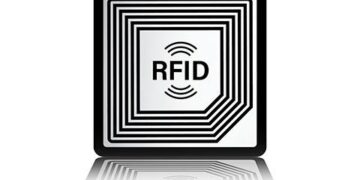Iowa Governor Kim Reynolds has announced a formal request for increased federal funding aimed at bolstering rural health care across the state. As rural communities continue to face challenges such as limited medical resources and provider shortages, the administration is emphasizing the urgent need for sustained financial support to improve access and quality of care. This initiative reflects Iowa’s commitment to addressing healthcare disparities and strengthening the infrastructure that serves its rural populations.
Iowa Governor Appeals for Increased Federal Investment to Strengthen Rural Health Infrastructure
Governor Kim Reynolds has formally urged federal lawmakers to boost funding aimed at enhancing Iowa’s rural health care system. Highlighting the ongoing challenges faced by rural hospitals and clinics, Reynolds emphasized the need for targeted investment to upgrade medical facilities, expand telehealth services, and support healthcare workforce development in underserved areas. This appeal comes amid rising concerns over hospital closures and a growing shortage of healthcare professionals in Iowa’s more remote counties.
In her statement, the governor outlined several priority areas where federal support could make a significant impact, including:
- Modernizing rural health infrastructure with advanced medical equipment
- Expanding broadband access to improve telemedicine capabilities
- Providing incentives and scholarships to attract and retain rural healthcare workers
| Investment Area | Current Status | Proposed Federal Support |
|---|---|---|
| Medical Equipment | Outdated in 45% of rural hospitals | $50 million grant program |
| Telehealth Expansion | Limited broadband access in 30 counties | $30 million for broadband infrastructure |
| Workforce Development | Shortage of 800+ healthcare professionals | $25 million for training incentives |
Addressing Workforce Shortages and Facility Upgrades in Underserved Communities
To confront the persistent challenges faced by rural healthcare providers, Iowa’s administration is prioritizing both workforce development and facility modernization. The state plans to utilize federal funding to implement initiatives that will attract and retain healthcare professionals in underserved areas. Efforts include expanding training programs, offering loan forgiveness for rural service, and improving recruitment incentives for nurses and primary care physicians. These steps aim to reverse the trend of personnel shortages that compromise patient care quality and accessibility.
Alongside staffing improvements, significant investments will be directed toward upgrading critical infrastructure. Many rural facilities require advanced medical equipment and enhanced telehealth capabilities to meet today’s standards. Funding will support:
- Modernization of emergency rooms to ensure timely, life-saving interventions.
- Installation of high-speed broadband to expand telemedicine services.
- Renovations designed to improve patient safety and operational efficiency.
These combined measures seek to create sustainable healthcare environments capable of serving Iowa’s rural populations effectively.
| Initiative | Target Area | Expected Outcome |
|---|---|---|
| Loan Forgiveness Program | Rural Clinicians | Increase provider retention by 20% |
| Emergency Room Upgrades | 3 Regional Hospitals | Reduce critical care wait times |
| Broadband Expansion | Remote Clinics | Enhanced telehealth access |
Strategic Recommendations for Sustainable Rural Health Care Funding and Policy Reform
To ensure the longevity and effectiveness of rural health care in Iowa, a multi-pronged approach is essential. Policymakers must prioritize increased federal investment targeted specifically at expanding infrastructure, enhancing telehealth capabilities, and attracting skilled medical professionals to underserved areas. Strengthening public-private partnerships can unlock innovative funding streams, while adaptable reimbursement models should reflect the unique logistical and operational challenges faced by rural providers.
Key strategic actions proposed include:
- Implementing outcome-based funding: Tie financial support to measurable improvements in rural patient outcomes.
- Expanding Medicaid coverage flexibility: Allow states to tailor programs that better serve rural populations.
- Investing in workforce development: Scholarships and loan forgiveness to encourage rural medical careers.
- Enhancing broadband access: Critical for telemedicine expansion and remote patient monitoring.
| Recommendation | Expected Impact | Timeline |
|---|---|---|
| Outcome-based funding models | Improved care quality and accountability | 1-3 years |
| Medicaid flexibility expansion | Greater accessibility for vulnerable populations | 2-4 years |
| Workforce incentive programs | Increased rural provider retention | Immediate to 5 years |
| Broadband infrastructure investment | Facilitated telehealth and remote care | 3-6 years |
In Summary
As Iowa pursues federal funding to bolster rural health care, Governor Kim Reynolds underscores the critical need to sustain and improve medical services in the state’s underserved communities. The outcome of this initiative will be closely watched by policymakers and residents alike, as it holds significant implications for the future accessibility and quality of health care across Iowa’s rural landscape.
















![[News] China Makes Breakthrough in Chip Technology, Paving the Way for Lithography Advancements – TrendForce](https://earth-news.info/wp-content/uploads/2025/11/324664-news-china-makes-breakthrough-in-chip-technology-paving-the-way-for-lithography-advancements-trendforce-360x180.jpg)













